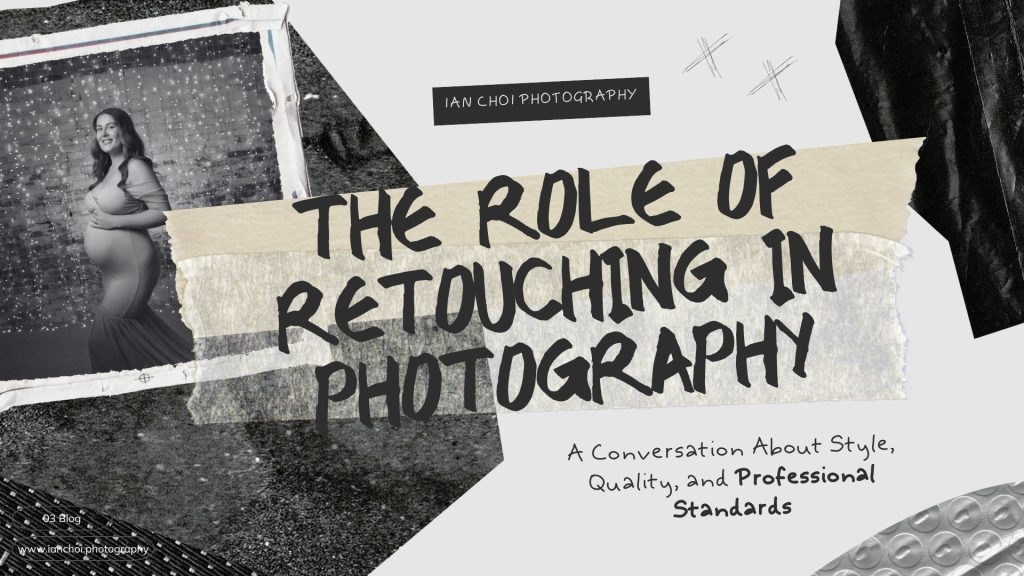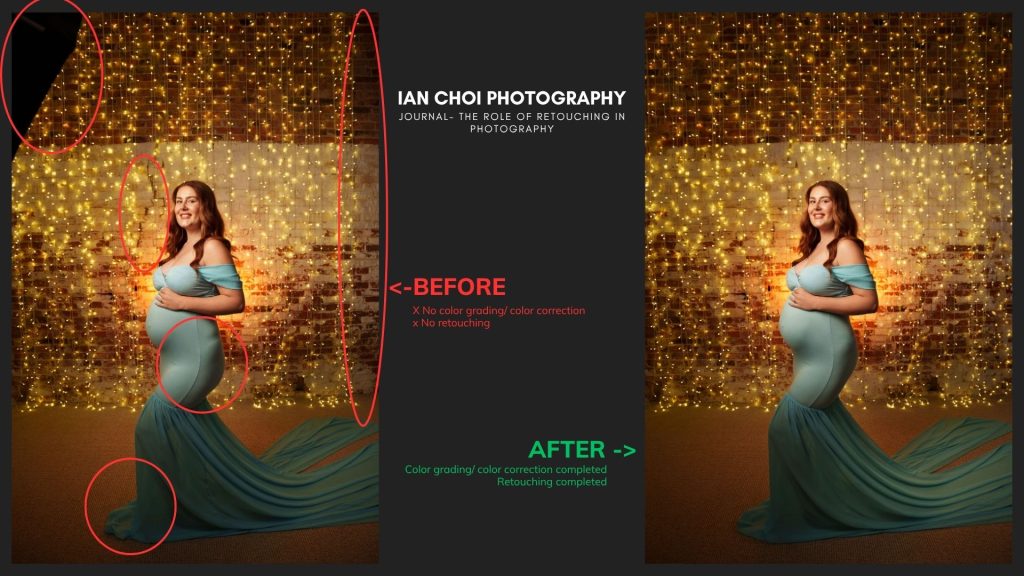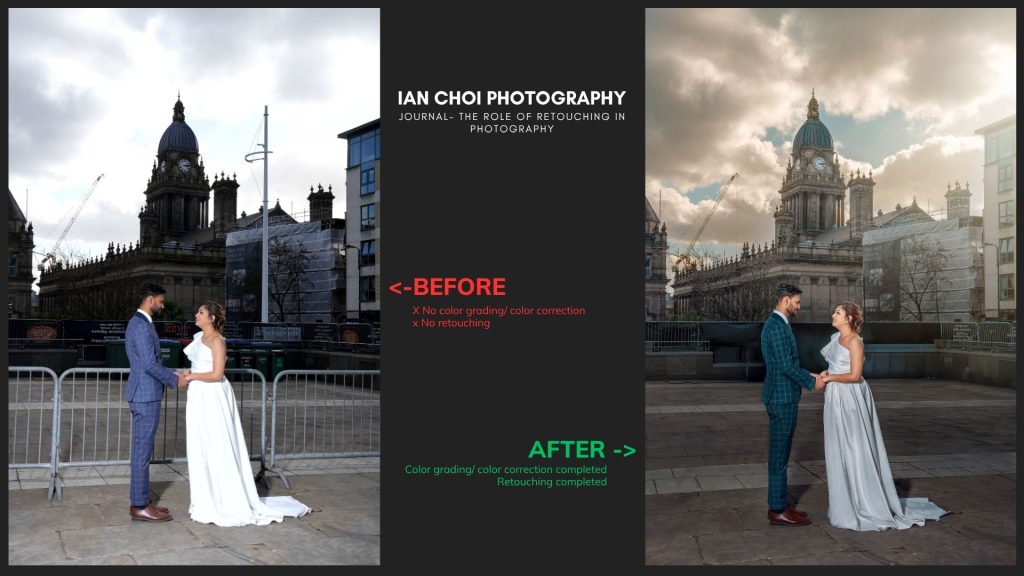What Is Retouching in Photography? A Conversation About Style, Quality, and Professional Standards In the world of professional photography, retouching is often mentioned—but not always clearly understood. While most people associate editing with colour adjustments or filters, retouching in photography is a much more detailed and purposeful process. It plays a central role in how images are refined and prepared for delivery, especially in fields like weddings, portraits, fashion, and branding. This article breaks down the difference between colour grading and retouching, common industry expectations, and why retouching remains a foundational part of photography post-production.

The Role of Retouching in Photography:
A Conversation About Style, Quality, and Professional Standards
Photography doesn’t end when the shutter clicks. In professional practice, the preparation before a shoot lays the foundation for every image—but equally essential is the post-production process, which helps bring the final vision to life.
Among the various stages of post-production, retouching is one of the most frequently discussed—and often misunderstood—steps in the creative process.
Colour Grading vs. Retouching: Two Different Functions
Colour grading focuses on the overall tone, exposure, and consistency across a series of images. It helps establish mood and coherence.
Retouching, on the other hand, is more detail-oriented. It may involve skin refinement, removing distractions, adjusting lighting in specific areas, or correcting visual inconsistencies.
To put it simply:
。Colour grading shapes the aesthetic; retouching refines the finish.
An image with good composition and colour might still feel incomplete if the finer details are left untouched.
Retouching Is Not “Beautification”—It’s Precision
Retouching isn’t about altering reality. Instead, it functions as a form of visual refinement. Common examples include:
・Addressing temporary skin issues (e.g. redness, blemishes)
・Removing unwanted elements from the background (e.g. wires, bins, passers-by)
・Correcting distractions caused by the shooting environment (e.g. fabric creases, glare, flyaway hair)
Rather than fabricating a scene, the goal is often to restore how the moment felt, rather than how the camera mechanically recorded it.

Common Industry Expectations for Retouching
Different photography sectors (e.g. weddings, fashion, branding) have different standards, but the following principles are widely acknowledged in the industry:
1. Consistency
Images from the same set should share a consistent tone, light balance, and skin tone. In wedding or brand photography, this visual continuity is especially important.
2. Subtlety
Good retouching should be nearly invisible. The aim is not to over-polish, but to enhance without distracting. Minor blemishes may be removed, but skin texture is usually preserved to maintain authenticity.
3. Brand Language
In commercial or fashion photography, retouching often aligns with the intended style of a brand or publication. This could involve stylised skin tones, deliberate lighting effects, or a distinct editorial finish.
4. Fixing vs. Enhancing
Sometimes retouching is necessary to correct limitations from the shoot (e.g. distracting background elements or harsh lighting). Other times, it’s used to elevate image quality beyond what’s captured in-camera.
5. Time & Expertise
High-end retouching—especially hand-done work like frequency separation, dodge & burn, or composite blending—can take 30 minutes to several hours per image, depending on complexity. This often affects both pricing and turnaround time.
A Spectrum of Approaches—No One “Right” Way
There is no single standard for how much retouching is “correct.” Some photographers prefer a documentary, lightly edited approach. Others choose to invest in fine detail work to create a more polished, editorial-style finish.
Both approaches serve different purposes—and the choice depends on what clients value in their final images.
That said, for industries like weddings, portraits, branding, PR or publishing, retouching is often considered part of professional delivery—especially where attention to detail and image longevity are key.
